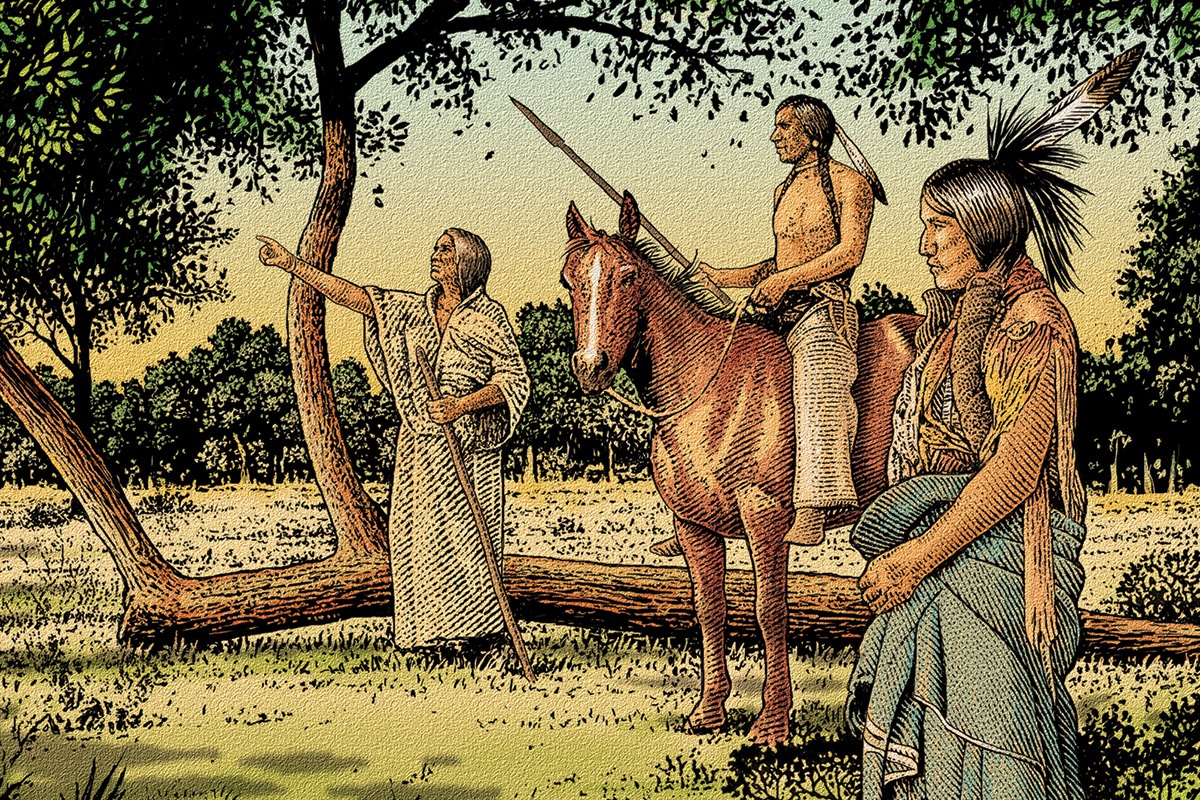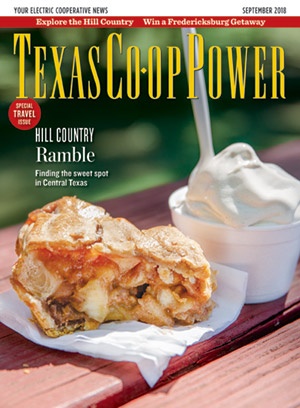The use of trees to identify a location has always been important in the traditional life of the Comanche. In days of old, our ancestors would mark a tree, or use a tree that was naturally marked and stood out on the landscape, to identify a resource. The tree itself was a resource and could be used to identify various other resources, such as food, medicine, water, a path, a burial site or a meeting place. More often than not, these trees marked more than a single resource.
For nomadic people, it was important to remember locations where activities took place and that, in the oral tradition, held significant information about cultural life. These types of trees are still important and in use today. We utilize the trees within the landscape as a means of following the paths of our ancestors’ teachings and connecting ourselves to the country we know as Numu Soko (the Comanche phrase for “Comanche Land”). We still stop to gather medicines and foods, as well as to camp, or follow various paths that lead us to our destinations, often by the utilization of these trees. Essentially these historic resources are just as significant today as in yesteryear, for we are Comanche—yesterday, today and tomorrow.
I remember traveling around Comanche country as a child with my grandparents and elders to collect certain resources. There were specific locations where trees offered food or medicine for collection, as well as locations where trees were used for identifying other important occurrences or places. For example, such a tree stood north of our old home place. It was an old, unusual-looking tree that marked the place where my siblings, cousins, friends and I would gather to play. It was a place where the kids could be found at any time of the day—easily within calling distance in the advent of an important announcement or need. There was no distinction among seasons and its use. It was the kind of tree that stood out in the landscape, calling your attention, begging you to come closer and directing your activities. Whether it was with or without leaves, we spent hours in and beneath that tree, discovering nature and ourselves. It was a guide of sorts, and a friend as well, who seemed to listen to our stories and protect us from ourselves. And although we children used it as a means of entertainment, adults took advantage of the medicine and materials it offered. To us it was a gentle giant who grew as we did, yet stood still in time. Simply put, it was a marker tree that provided a variety of services.
There was also an area along the creek where certain trees stood tall above the rest and yet seemed hidden in the midst of the grove. Those trees brought great joy to our household when the fruit was added to tah ah (the Comanche word for “pounded or jerked meat”). Various nuts and sometimes fruit were added to naturally sweeten the meat as it was pounded or added to other foods. In autumn, these trees would provide fruit for the taking, and usually the family and extended community would gather to collect their offerings. As I reflect upon my early years among my elders, these are only a few of the many examples of support these important trees gave us. What might seem trivial or mundane was, in actuality, a long tradition where identifying, marking and utilizing a specific tree was important in Comanche life.
So, today we acknowledge that past and look toward the future as we continue to identify, mark, and utilize Comanche Marker Trees.
In 1997, a group of Comanche visited the greater Dallas area to see firsthand a piapu nakutabai huupi (Comanche words for “big pecan tree”) and met with our good friends Linda Pelon, Steve Houser and the Dallas Historic Tree Coalition, all of whom were instrumental in recognizing these magnificent trees. From that visit, the first Comanche Marker Tree was formally recognized via a tribal proclamation. As a result of that visit and numerous other meetings over the years to discuss the varying aspects of marker trees and Comanche cultural heritage, as well as share research data and plan trips to see potential trees, it was decided that the time was at hand to produce a book describing this aspect of Comanche culture. The book is the result of many years and miles of research-gathering among a host of friends with a shared interest in historic preservation, emphasizing Comanche Marker Trees.


